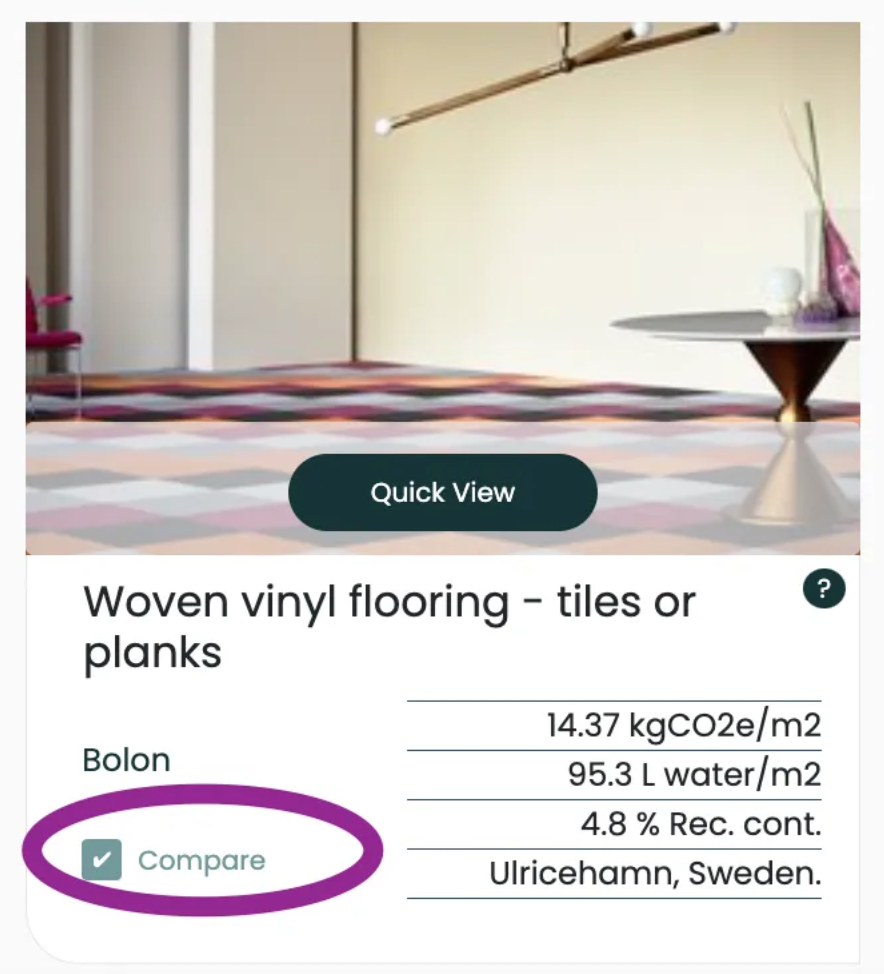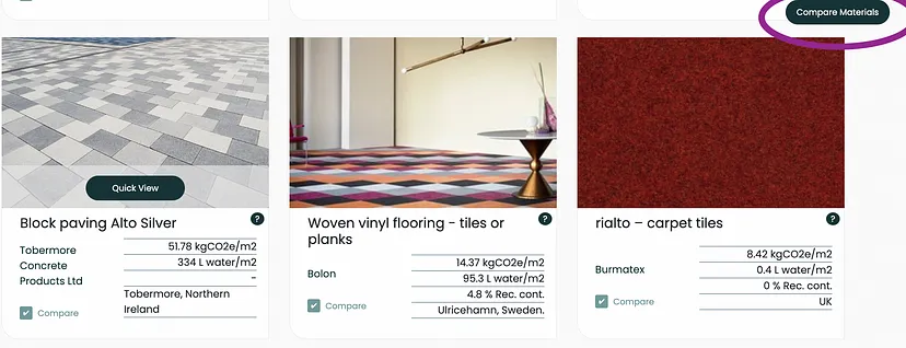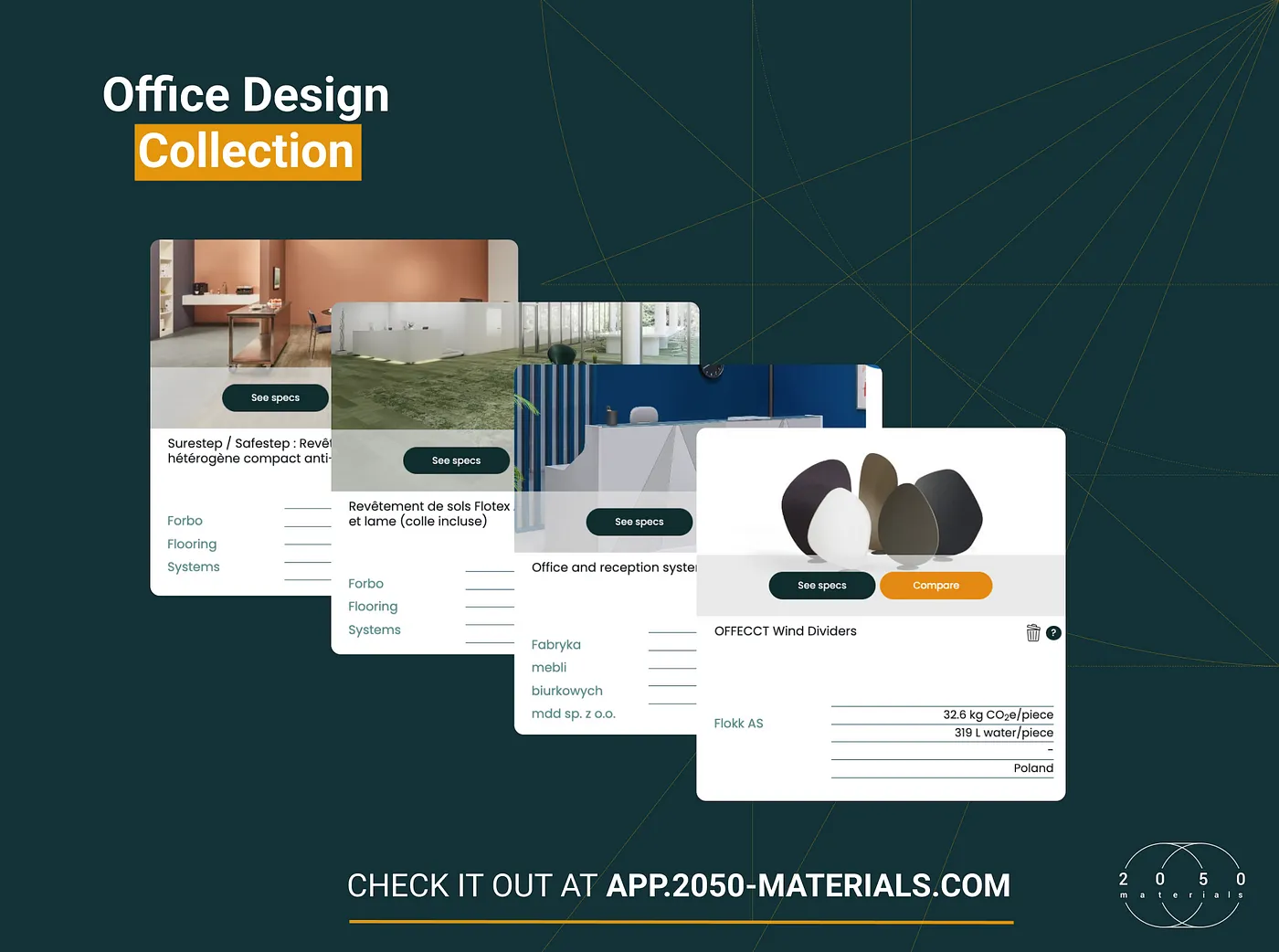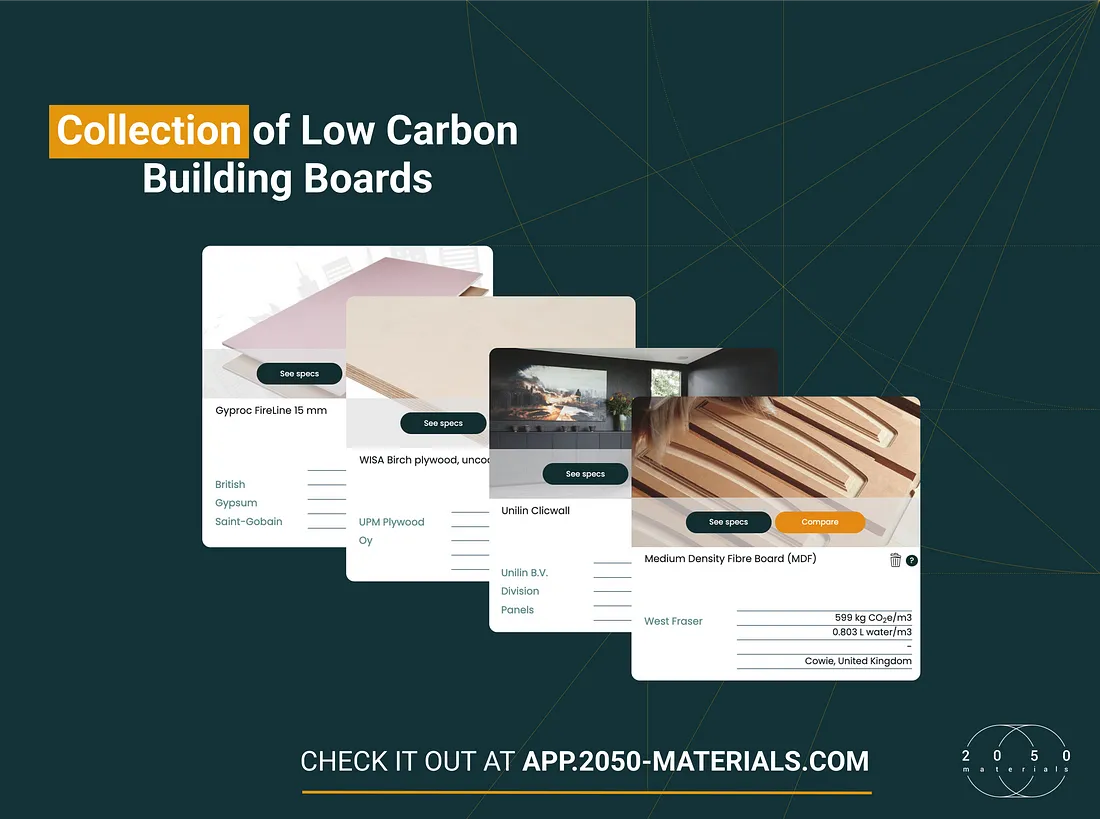Proceed with Caution
The following short document outlines a few things to look out for when comparing materials on the 2050 Materials platform.
How can you compare products?
3 simple steps
- Search for a product type (e.g. Tiles)

2. Click the “Compare” checkbox on 2–4 products you would like to compare.

3. Once you’ve selected a few products, click the “Compare” button on the top right

What should you look out for when comparing products?
- Compare products that serve the same function
Comparing tiles with precast concrete panels or paint will not be very insightful. - Ensure the data is of equal quality, or follows the same standard
Although this is a tricky one, try to make sure that the data comes from the same type of assessment (e.g. EPD following ISO) - Make sure you the declared unit for each product is the same
Comparing the carbon footprint of 1kg of concrete vs 1m3 of concrete will yield confusing results. We are working on giving you the ability to transform declared units soon! - When comparing Material Facts, try to ensure the same life-cycle stages are covered.
A product may appear to have better performance if different life-cycle stages are covered.
Are there any issues we missed? Reach out to us at info@2050-materials.com to contribute to maximizing transparency in the sector.
The 2050 Materials team
Related articles

Climate-Resilient Materials for the Built Environment: A Data-Centred Prime
As climate volatility intensifies, resilience metrics are fast becoming as critical as carbon data in material selection. This article outlines why adaptation is now a design imperative, how materials can be evaluated through a systems lens, and what KPIs project teams should demand. From self-healing concrete to fire-rated façades, we present a structured taxonomy of resilient materials, explain how to embed this intelligence into digital design workflows, and propose next steps for specification, benchmarking, and procurement.
Read more
The Most Interesting Low Carbon Products in Office Design
In this article and collection, we highlight 11 outstanding products that contribute to a lower carbon footprint in office design.
Read more
Top Low Carbon Building Boards: Performance, Benefits, and Use Cases
The building boards highlighted in this article and collection showcase low-carbon innovation in modern construction.
Read more